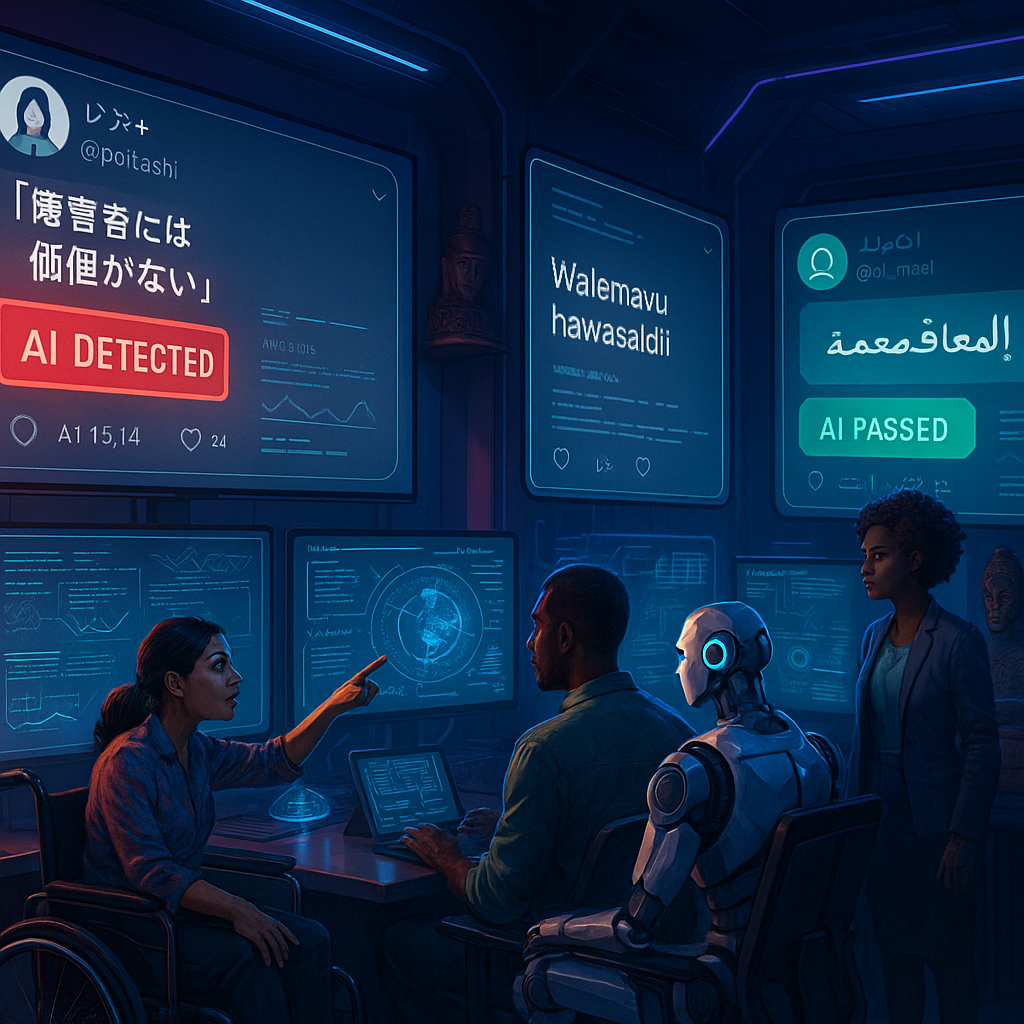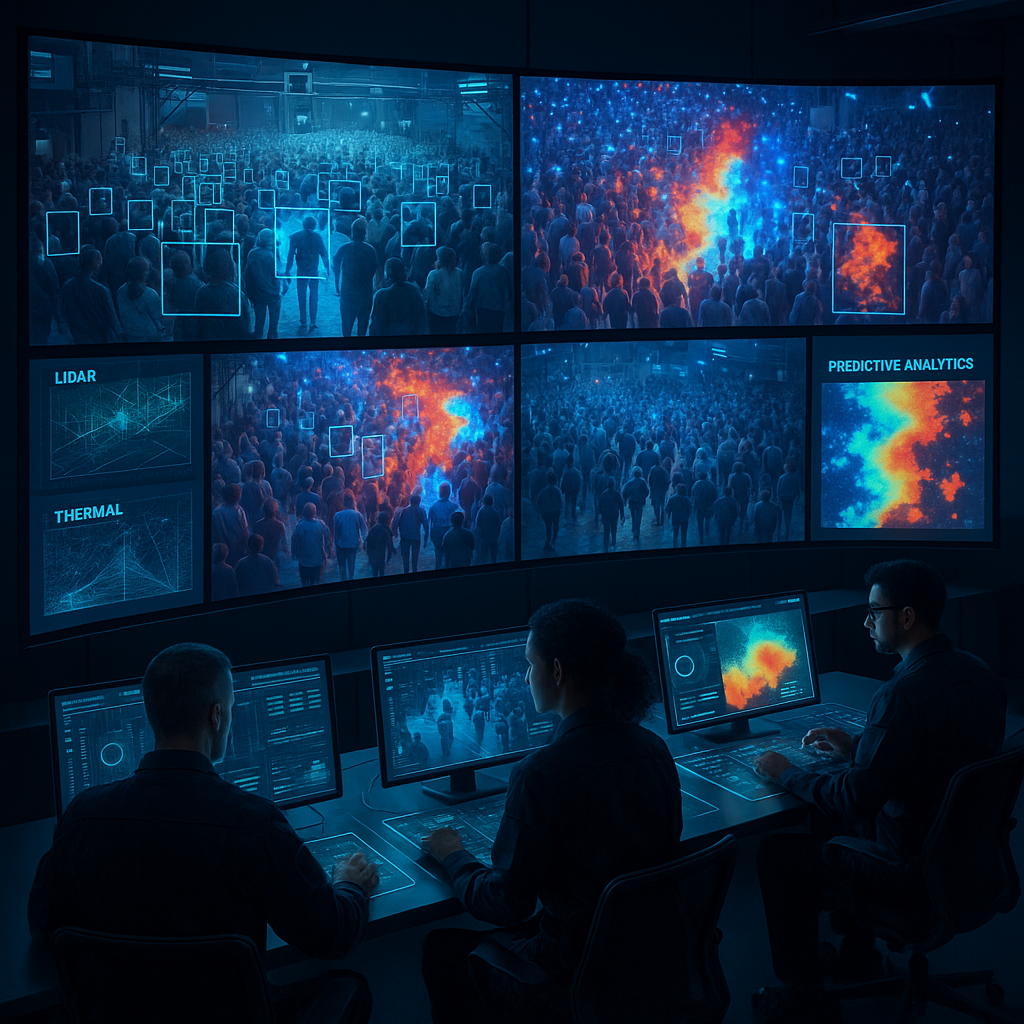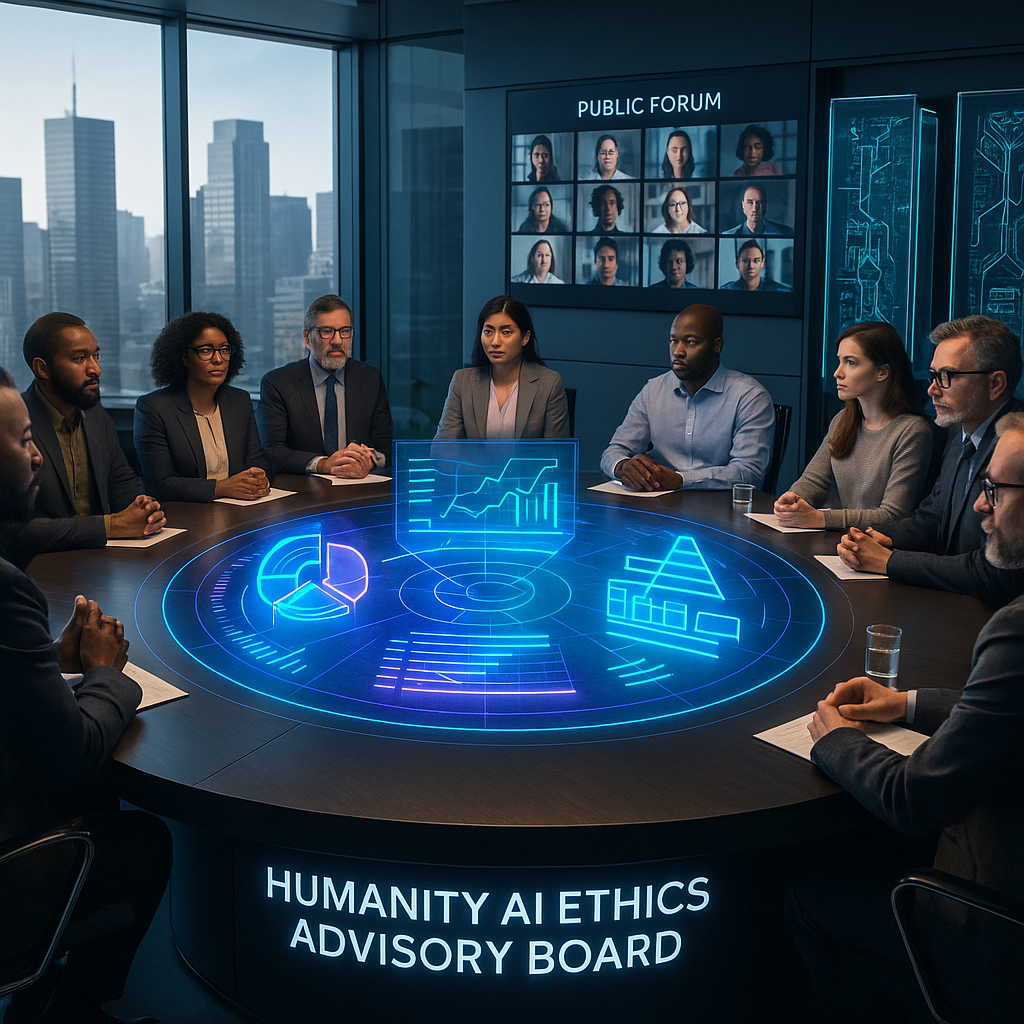Key Takeaways
- Generative AI redefines creativity as collaboration, not replacement: Rather than erasing human creativity, generative AI tools automate repetitive processes, allowing creators to devote energy to the most innovative and uniquely human aspects of their work.
- Creative industries face seismic shifts in professional identity: As AI matures into a pervasive, general-purpose technology, the roles of artists and creators are in flux, with emphasis shifting from manual execution to ideation, curatorial judgment, and storytelling.
- AI democratizes access to creative tools, widening participation: Technologies such as text-to-image synthesis, AI-generated music, and automated video editing empower newcomers, small businesses, and non-specialists to achieve results once reserved for elite professionals or major studios.
- Ethical considerations center on authorship, ownership, and originality: The proliferation of AI-generated content sparks urgent debates about copyright, creative consent, and intellectual property, challenging existing legal and cultural frameworks.
- AI reshapes creative job markets: While automating aspects of content production can displace traditional roles, AI simultaneously cultivates demand for emerging professions, prompt engineers, AI workflow designers, and human-AI curators, across fields like media, design, and marketing.
- Adaptive creators flourish by embracing AI’s learning curve: Artists who integrate generative AI expand their creative vocabulary, leveraging both computational scale and human intuition to unlock new avenues of artistic and professional opportunity.
- Generative AI echoes historic technological revolutions: Much like the advent of the printing press or electricity, AI’s disruptive force brings permanent, paradigm-shifting changes to how creative ideas are generated, distributed, and monetized across industries.
- Cultural narratives drive adoption and integration: Whether creators view AI as a tool, collaborator, or existential threat significantly shapes how—and how quickly—these technologies are integrated into diverse artistic and business practices.
As generative AI alters the creative landscape, professionals are challenged to reexamine their identity and impact, forging new definitions of value in an era shaped by intelligent machines. The following sections delve deeper into generative AI’s capabilities, its sweeping cross-industry applications, and actionable strategies for thriving alongside this transformative force.
Introduction
A digital renaissance has begun—one where brushes, cameras, and pianos are joined by neural networks as co-creators. In this new epoch, generative AI systems synthesize art, music, poetry, and beyond from nothing more than a prompt. For the artist, designer, or creative entrepreneur, this evolution is no mere upgrade—it’s an existential rethink of what it means to create, collaborate, and claim ownership in a society increasingly shaped by artificial intelligence.
Rather than supplanting human ingenuity, generative AI liberates it. By automating the repetitive and routine, AI empowers creators to ascend to the heights of imaginative thinking, pioneering forms, and narratives previously out of reach. These supercharged tools expand access to creative production while surfacing urgent questions about authorship, originality, and the evolving nature of creative professions.
Stay Sharp. Stay Ahead.
Join our Telegram Channel for exclusive content, real insights,
engage with us and other members and get access to
insider updates, early news and top insights.
 Join the Channel
Join the Channel
What new forms of expression—and new challenges—emerge as AI reshapes the boundaries of art and creativity? We now explore this territory, revealing how AI is transforming artistic identity, democratizing the act of creation, and prompting an industry-wide reckoning with ethics, economics, and opportunity.
Understanding Generative AI and Its Capabilities
To grasp generative AI’s impact, it’s vital to understand how these systems fundamentally shift our conception of machine creativity. At their core, modern generative AIs rely on advanced neural networks, particularly transformer models, capable of parsing massive datasets to generate content that is both novel and coherent.
Technical Foundations and Evolution
This leap began with the introduction of Generative Adversarial Networks (GANs) in 2014, enabling machines to synthesize realistic images by pitting two neural networks against each other—a dynamic that encouraged output indistinguishable from human-made content. The next inflection point arrived in 2017, when transformer architectures introduced a new way for AI to attend to relationships within data, setting the stage for creative breakthroughs.
Key milestones include:
- 2014: GANs unleash a new era of image synthesis.
- 2017: Transformers enable context-aware language and image generation.
- 2020: GPT-3 astonishes with fluent, human-like text creation.
- 2022: Text-to-image systems like DALL-E and Midjourney achieve photorealistic, stylistically diverse outputs.
Expanding Creative Capabilities
Today’s generative AI reimagines content creation across an ever-growing spectrum:
- Visual arts: Generate original illustrations, logos, marketing assets, and photorealistic imagery from text prompts.
- Music and sound design: Compose compelling scores or soundscapes adaptable for games, movies, and podcasts.
- Literature: Draft short stories, poetry, and even complex narratives in the tone and style dictated by the user.
- 3D modeling and design: Rapidly conceptualize architectural spaces or product prototypes for engineering, gaming, and manufacturing.
- Voice and speech synthesis: Craft realistic voiceovers, AI narrators, and accessible audio content for broadcasting and education.
These capabilities are being continually refined, enhancing not just precision but creative flexibility—drawing AI ever deeper into the heart of professional creative industries.
Generative AI as a Creative Partner
The relationship between human and machine in creative work is no zero-sum game. A new hybrid model has emerged—one where the machine serves as co-creator, assistant, and muse in equal measure.
Transforming Creative Workflows
Creative professionals in design, media, advertising, film, and even legal or educational content development are weaving AI into all phases of their process. For instance, a fashion designer may use AI to generate hundreds of garment concepts from a single moodboard, accelerating the iteration cycle while preserving their unique aesthetic sensibility. In publishing, editors use AI to identify untapped themes or to brainstorm storylines, streamlining ideation and enabling quicker time-to-market.
A recent survey of global media agencies revealed that integrating generative AI cut concept-to-prototype timelines by over 50%, not by erasing jobs, but by augmenting human vision and freeing up bandwidth for more ambitious, meaningful work.
The Delicate Dance: Augmentation versus Automation
Embracing AI as a collaborator, rather than mere replacement, preserves the irreplaceably human:
- Conceptual vision: Only humans can merge cultural context, intuition, and emotional resonance.
- Strategic judgment: Selecting which AI outputs amplify a project’s narrative or purpose.
- Curation and refinement: Turning inspired AI drafts into finished, emotionally powerful works.
- Cultural adaptation: Tailoring content to different languages, values, or societal shifts—an area where pure AI still lags.
By aligning strengths—machine execution with human insight—creative industries generate outcomes that neither could achieve alone.
Democratization of Creativity Through AI
By lowering the technical and resource barriers to creative production, generative AI expands who gets to create—and what gets made.
Opening New Doors to Participation
Easy-to-use platforms integrating AI-powered design and content-generation tools have revolutionized several sectors:
- Small business and entrepreneurship: Startups can now develop polished brands, campaign visuals, and website assets without hiring full creative teams.
- Education: Teachers introduce students to advanced storytelling, design, or coding via AI co-pilots, making complex skills more accessible and inspiring the next generation of innovators.
- Healthcare: Physicians and medical educators use AI to generate anatomically accurate illustrations or intuitive patient information leaflets with unprecedented speed.
- Finance and marketing: Advisors automate pitch deck creation and visualize data narratives, democratizing the art of persuasive communication.
A 2023 cross-sector report revealed that nearly half the adopters of generative AI in the arts and media had never engaged in creative production at a professional or advanced amateur level, illustrating a profound expansion in participation.
Navigating the Paradoxes of Democratization
However, this newfound accessibility provokes pressing questions:
- Can traditional craft and technical expertise maintain their value as AI-generated work proliferates?
- How do markets and audiences discern quality or originality amid a deluge of synthetic content?
- What new standards and mentorship models will guide rising creators through an AI-driven landscape?
As generative AI expands the circle of creators, fostering community, critical feedback, and pathways for learning becomes more important than ever.
Stay Sharp. Stay Ahead.
Join our Telegram Channel for exclusive content, real insights,
engage with us and other members and get access to
insider updates, early news and top insights.
 Join the Channel
Join the Channel
Impact on Creative Industry Roles
The creative workforce is undergoing a rapid evolution, catalyzed by AI-driven shifts in required skills and the emergence of novel professions.
Emergence of New Creative Specializations
Hybrid roles are deepening across industries:
- Prompt engineers: Develop nuanced, strategic commands for AI systems to produce highly specific outputs—valuable in marketing, game development, and film.
- AI-augmented educators: Use generative tools to craft adaptive, personalized teaching materials and multimedia content for diverse learners.
- Curators and validators: Evaluate AI-generated art, music, and writing, employing both algorithmic analysis and expert judgment to ensure quality, relevance, and ethical alignment.
- AI-integrated brand strategists: Blend market insights with AI creativity to design hyper-targeted campaigns in retail and consumer goods.
Essential skills now span:
- Digital literacy and understanding of AI capabilities and limits
- Creative interpretation and integration of AI outputs
- Strategic oversight to maintain vision and intent
- Cross-disciplinary collaboration, fusing technical and artistic expertise
These new roles are proliferating not only in creative sectors but also in healthcare, education, law, and nonprofit organizations investing in dynamic content creation and engagement.
Ethical, Legal, and Societal Considerations
Generative AI challenges long-held assumptions about originality, creative labor, and intellectual property. The rapid advance of technology has left regulatory and ethical standards struggling to keep pace.
The Shifting Landscape of Authorship and Ownership
Key legal and ethical pain points include:
- Training data provenance: Are AI models trained on publicly available works infringing on the rights of original creators in fields such as photography, music, or academic research?
- Derivative versus original work: At what point does AI-generated content cross the threshold into new, protectable creation?
- Consent and credit: How do creators ensure proper attribution, especially when AI blends influences from disparate sources?
- Copyright in flux: Courts increasingly demand substantial human involvement for content to qualify for copyright—raising complex questions for collaborative projects in film, architecture, and product design.
Societal implications run even deeper: as AI-generated narratives and images permeate news, politics, and cultural discourse, new mechanisms for authentication, transparency, and digital literacy are urgently needed to preserve trust and foster responsible use.
Strategies for Artists and Creators
Navigating the generative AI era demands intentional adaptation. Those who thrive will be the ones who treat AI as an amplifier, not an adversary.
Blueprint for Strategic Response
Key strategies include:
- Build AI literacy: Understand both the potential and limitations of generative models; experiment with tools across your field.
- Identify your human differentiator: Lean into originality, emotion, and strategic intent—areas where machines still cannot fully compete.
- Design hybrid workflows: Use AI to accelerate ideation and production while retaining curatorial authority over final outputs.
- Engage in ethical dialogue: Participate in shaping AI adoption standards, copyright reform, and new creative communities based on transparency and mutual respect.
- Seek continuous learning: As AI evolves, stay ahead by engaging with thought leaders, peer communities, and innovation hubs—such as AI Dojo, where technical and philosophical inquiry meet.
By adopting this dual mindset—embracing both the new tools and the timeless principles of creativity—artists, educators, marketers, and entrepreneurs can ride the wave of transformation rather than be swept away by it.
The Road Ahead: Lasting Transformation
Generative AI stands as a general-purpose technology whose disruptive potential echoes the arrival of the printing press, electricity, or the internet. The structural transformation unfolding across creative, educational, legal, and consumer-facing industries will reverberate for decades.
Emerging Patterns and Possibilities
We are witnessing:
- Hybrid creative processes: Human-guided, AI-augmented workflows become standard. In architecture, for example, algorithms generate early-stage building forms, while human designers bring context and meaning.
- Redefined value in creative markets: Originality, taste, and purposeful curation command a premium, even as automated production commodifies routine content.
- New educational paradigms: Institutions integrate creative AI into curricula, equipping students with interdisciplinary fluency—combining code, aesthetics, ethics, and communication.
- Expanded cross-industry relevance: In environmental science, for example, generative models visualize climate data, enabling compelling storytelling for advocacy; in finance, AI crafts nuanced investor reports and scenario projections.
The creative economy’s future will be shaped by those willing to reimagine not just the act of creation, but the complex webs of meaning, utility, and community that define it.
Conclusion
Generative AI does not simply introduce a new palette, it rewires the very framework of human creativity. Transformer architectures and neural networks grant us tools of startling breadth, yet it is the union of machine speed with human vision that forges true innovation. In this new world, creativity is less an act of solitary genius and more a partnership between minds—organic and artificial—collaborating in unexpected ways.
As access to creative power broadens and the lines between human- and machine-made blur, industry professionals and newcomers alike face a profound challenge: to claim the role of curator, storyteller, and ethical navigator in a landscape crowded with possibility and uncertainty. New professions emerge, boundaries dissolve, and the canon of creative work expands to include forms and expressions previously unimaginable.
Looking ahead, enduring success will belong to those who master not just the technical, but the philosophical dimensions of creativity. The next era will reward those who can harness alien minds, both silicon and human, to expand our shared vocabulary of meaning, beauty, and knowledge. The essential question isn’t whether you’ll adopt these advances, but how elegantly you’ll blend intuition and algorithm, vision and code, in the endless, ever-evolving pursuit of creative expression.





Leave a Reply